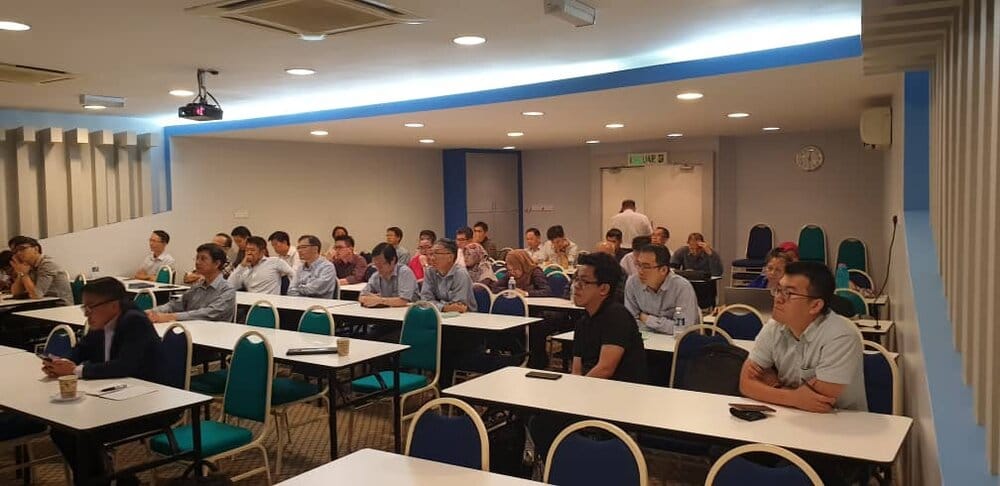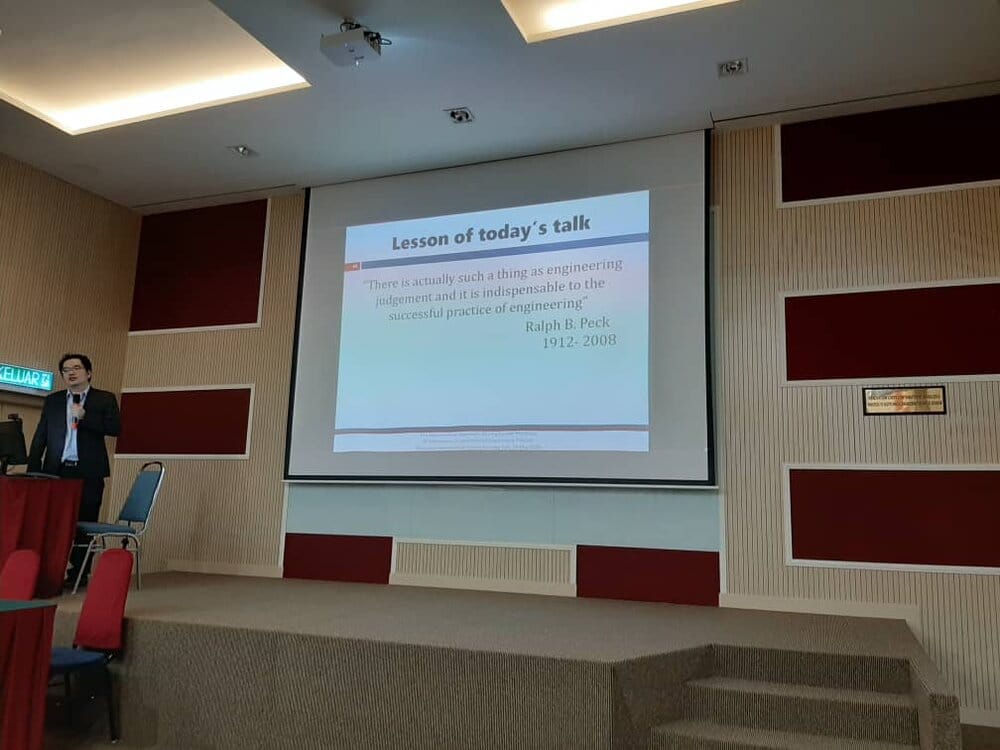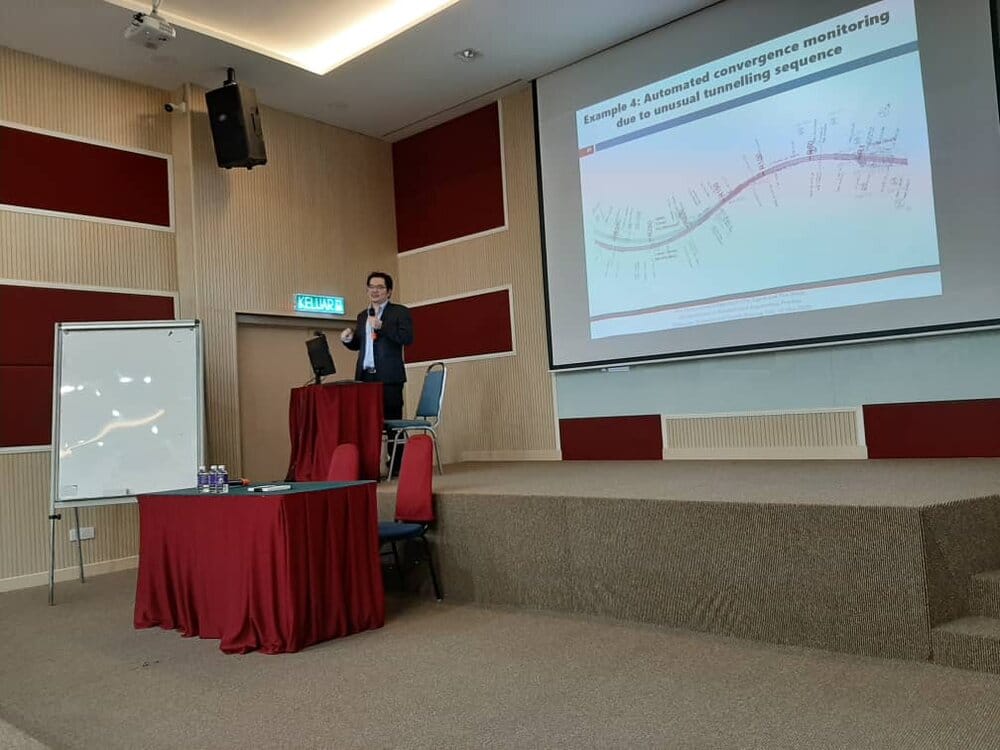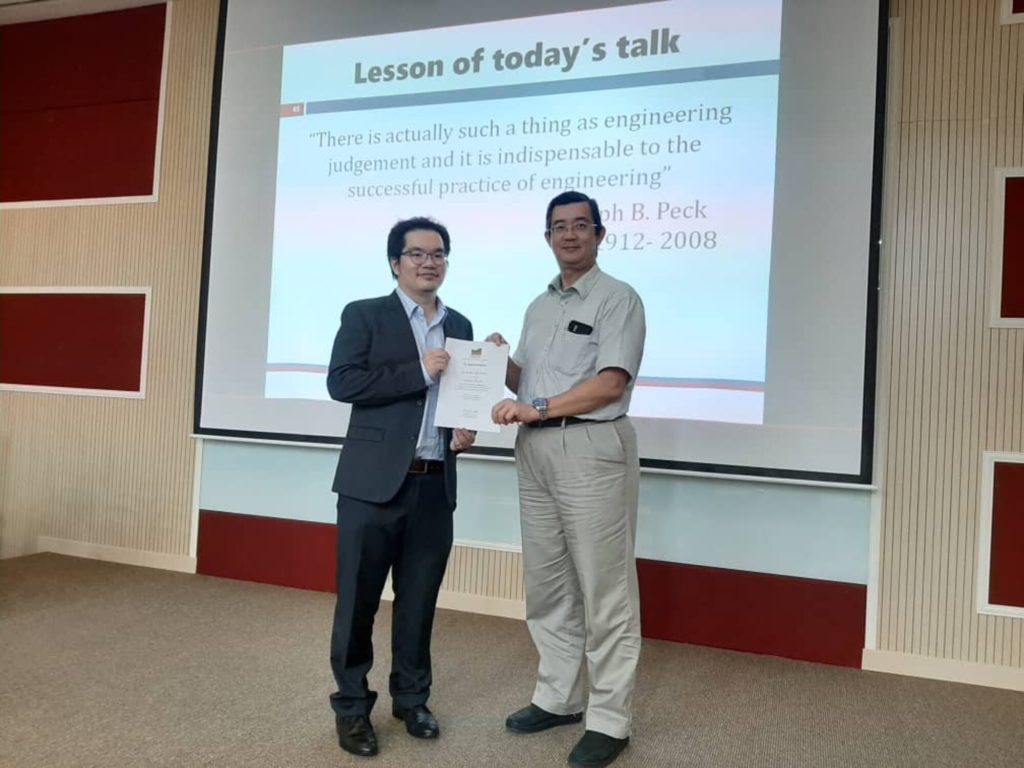The Signal and The Noise of Information in Geotechnical Engineering Practice
Dr. Boon Chia Weng obtained his D.Phil. at Oxford University in 2013, and B. Eng. at Nanyang Technological University in 2009. He was awarded the Rocha Medal in 2016 by the International Society for Rock Mechanics and Rock Engineering (ISRM). He was a past recipient of the Lee Kuan Yew Gold Medal, Professional Engineers Board Gold Medal (Singapore) and the Yang di‐Pertuan Agong Scholarship (Malaysia). He is working with Gamuda Engineering Sdn Bhd, and seconded to the design‐and‐build contractor joint venture, MMC‐Gamuda KVMRT (T) Sdn Bhd, at which he contributes to the construction of underground tunnels and stations in the 1st and 2nd Line of the underground mass rapid transit project in Kuala Lumpur. He is a committee member at the Geotechnical Engineering Technical Division, as well as Tunnelling Underground Space Technical Division of the Institution of Engineers Malaysia, and was inducted as a Future Leader Member of the American Rock Mechanics Association (ARMA) in 2017 in San Francisco. He was recently awarded the Tan Sri Zainal Prize from The Institution of Engineers Malaysia (IEM) in 2019 for his paper on building impact assessments due to underground tunnelling, and was elected as the Malaysian Representative for the International Tunnelling Association Young Member Group (ITAym). He is a member of TC103 Numerical Methods in Geomechanics of the International Society for Soil Mechanics and Geotechnical Engineering (ISSMGE).
In the observational approach, the quality of information is paramount to good decision making. The engineer needs to question the hidden assumptions, the reliability of his/her tools and the information made available to him/her that may influence his/her designs in either way, i.e. more conservative or optimistic. Practical examples are drawn from instrumentation monitoring, numerical analysis and site investigation, which are used routinely and relied upon by engineers to make decisions. The importance of appreciating the processes of obtaining the information is highlighted. The object is to encourage the exercise of intellectual caution in geotechnical engineering practice. Some real practical examples are used to demonstrate the value of good quality observations. Finally, future trends and tools for decision making are discussed. The evening talk reminisces Terzaghi’s Presidential Address in the 1st International Conference of Soil Mechanics, in cautioning engineers against the illusion of prescribing an optimistic routine to geotechnical engineering practice: “Engineers imagined that the future science of foundations would consist in carrying out the following program: Drill a hole into the ground. Send the soil samples obtained from the hole through a laboratory with standardized apparatus served by conscientious human automatons. Collect the figures, introduce them into the equations, and compute the result. Since the thinking was already done by the man who derived the equation, the brains are merely required to secure the contract and invest the money.”






